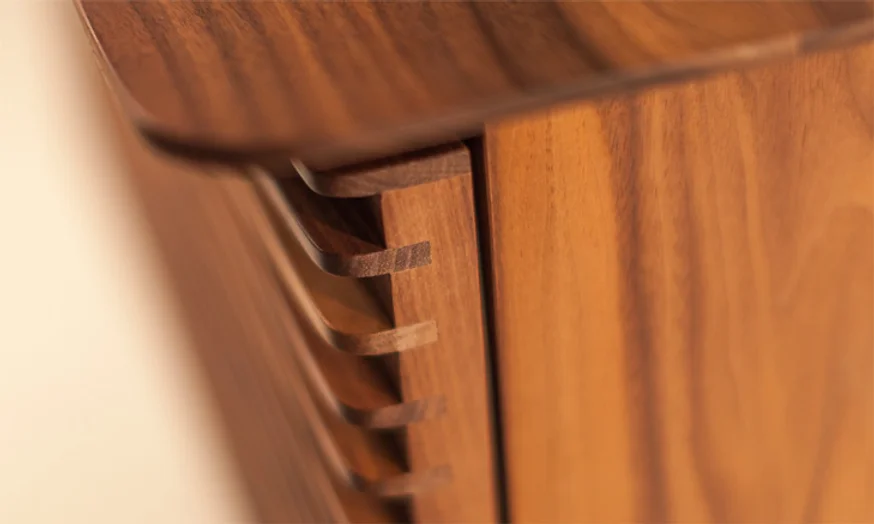VENEER - THE BAD GUY OR THE SURPRISING SUPERHERO?
- ian1210
- Jul 17, 2024
- 5 min read
When you learn that a piece of furniture has a veneer finish, do you automatically think its bad quality? Don’t worry you're not the only one! This process has had a bad rap over the years that’s for sure!
However did you know that the use of real wood veneer in furniture design has actually many benefits. The quality of veneer, when produced to a high standard by skilled craftsmen, is extremely high and the environmental factors in using a real wood veneer are surprisingly positive. Tormar have been advocates of the use of good quality, skilfully produced and sustainable real wood veneer in their designs for some time. And have championed this somewhat misunderstood secret hero.
So where did this all go wrong? For most, the stigma that surrounds veneer is the belief that the furniture that is made from, is to be avoided due to poor quality and bad production practices and in some instances this is true.
This poor reputation had a lot to do with the way in which veneer was vastly produced in the 1970’s, when cheap veneers became synonymous with inferior quality furniture.
What is even more surprising is the fact this cheap furniture, was often not even made from a veneered wood at all – but instead a laminate material trying to mimic real wood. These ''laminate materials'' made from plastic and paper were cheaply printed with a wood grain design to give the effect of real wood and more often than not of extremely poor quality. This poor quality resulted in a lot of the furniture that it was made from having defects such as lifted edges and gaps between panels.
Real wood veneers are produced to such high standards by skilled craftspeople, that defects like that would never happen. However still today this unfair perception of real wood veneer and the link with its lesser counterpart of laminate veneer is still very much apparent. This is possibly due to the lack of knowledge and the fact that consumers are still unaware of how real wood veneers are actually skilfully and sustainably made.
In parallel to this there is a trend of ''fast furniture’’ that is rapidly emerging amongst consumers, much like the trend we saw with fast fashion consumers are happy to forego quality and sustainability to obtain mass amounts of furniture at extremely low price points. This is somewhat exacerbated by the mass produced furniture made in Eastern Europe and Asia that offer these cheaper alternatives, but more often than not this furniture is made by a low skilled workforce with cheap poor quality materials including the above mentioned poorly manufactured laminate veneer.
Due to the fact that this fast furniture will most likely be of poor quality and with a lifespan of only a few years it is without doubt that most of this furniture bought will more than likely end up in landfills. But a lot of consumers are unaware of this growing problem and will have no conscience in throwing out pieces due to poor function and will re-buy again and again, perpetuating a cycle of a throw away generation!
Alex (founder of Tormar and West Bridgford Joinery) has always had a passion for sustainability and is conscious of the impact of our actions now for the future of the planet. Alex has always worked in joinery and furniture making and he has seen this growing trend of fast furniture emerging, this worrying trend encouraged and inspired him to set up Tormar. The whole ethos of Tormar was to create furniture in a sustainable way and to such high standards that the pieces made would be built for life. Therefore eradicating the need to throw out pieces of furniture that no doubt end up in a landfill.
So what actually is real wood veneer and what are the true benefits you may ask. In woodworking, a real wood veneer is actually a "paper thin" cut of wood that's applied to both sides of a strong core surface, like furniture-grade MDF to seal it, which in turn makes it incredibly strong, which is really important when you're making furniture with a mechanism for example.
The biggest area of discussion Alex has with clients is in regards to veneered MDF carcassing, which is normally the largest part of a fitted piece of furniture behind the doors. He often has to explain that to create such a large piece of cabinetry out of solid timber it would be highly prone to warping and cracking because of how timber (a natural product with an inherent level of moisture within it fibres) reacts in a heated home environment. Real solid wood expands and contract with changes in temperature and moves as its moisture content varies. This warping and cracking of the solid timber would of course affect the lifespan of the piece of furniture, and this is where real wood veneer becomes the hero.
Having a great quality veneer finish on MDF would mean that the problems of warping and cracking would be minimised. This is not to say this movement would not also sometimes happen with veneer, but since veneer is much thinner than solid wood, the movement is minimal and much more easily controlled. Therefore increasing the life span of the piece.
Veneer has a great variety of ways in which it can be used design wise too and actually when used creatively it can be a stunning design feature, this can be seen with Tormar's Florence Bed. The Florence bed has a beautiful decretive designed headboard skillfully made at Tormar with real wood veneer, this would be impossible to create in solid wood because the joints would crack open in dry conditions and swell tightly shut when damp. Since the wood veneer used for this bed is thin and glued to a substrate, it allows for this design and arrangement of wood to be perfectly placed.
In addition to keeping a wood panel stable, quality real wood veneer has other perks and purposes you may have not realised. It is considered an environmentally conscious option because the whole process is literally maximising the wood by cutting the log into thin sheets so that the core of the furniture is the recycled grade MDF not the full piece of real wood.
The absolute perfect and ideal combination of quality and sustainability is utilising this skilled veneer craftsmanship and using an eco friendly FSC certified MDF as a substrate. This is the basis of Tormar ethos towards furniture design and veneers and this is not cost driven, but for function with the added benefit of quality and of course sustainability... The absolute heart of Tormar.
To learn more and to see some incredible Veneer furniture including the Florence Bed go to www.tormar.co.uk









Comments